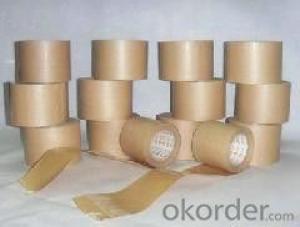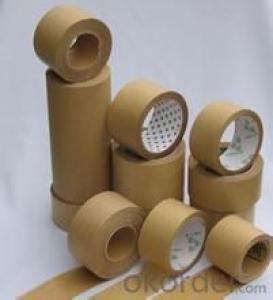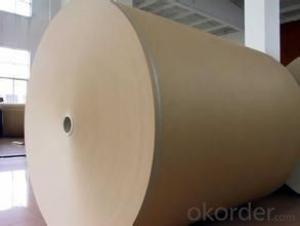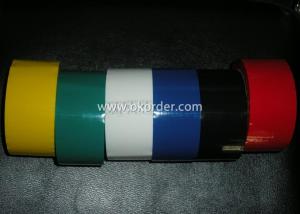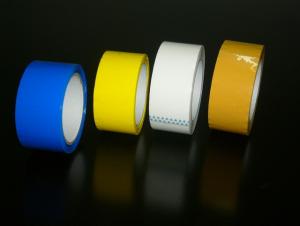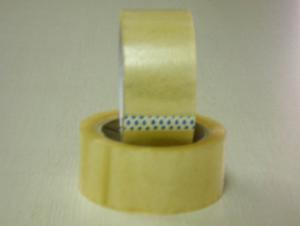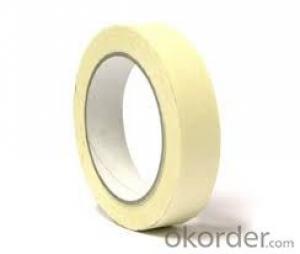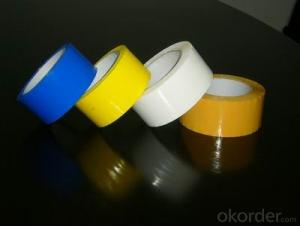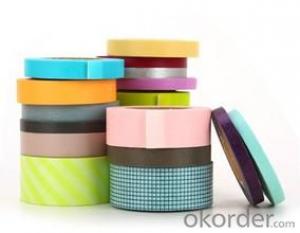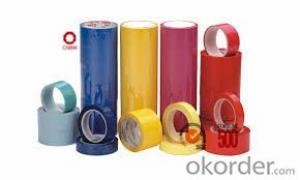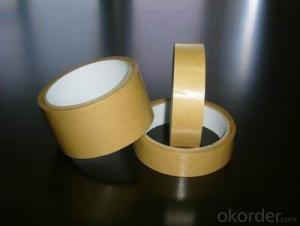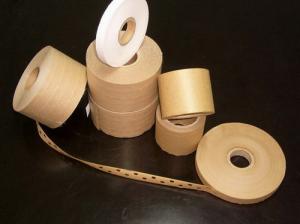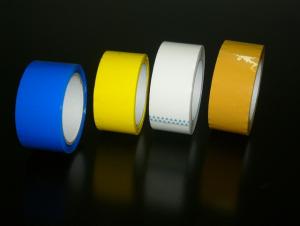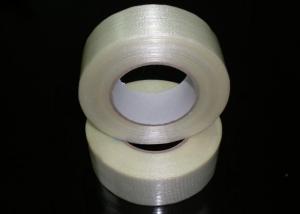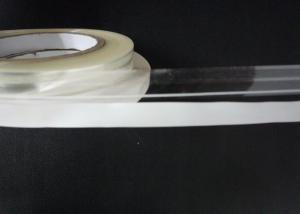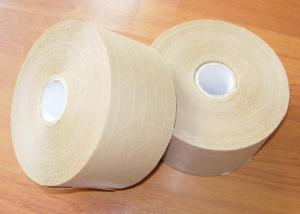FX Pink Easy Tear Kraft Paper Tape Packaging
- Loading Port:
- China Main Port
- Payment Terms:
- TT OR LC
- Min Order Qty:
- -
- Supply Capability:
- -
OKorder Service Pledge
OKorder Financial Service
You Might Also Like
Packaging & Delivery
Packaging Detail: | 48rolls per carton,or base on client's request |
Delivery Detail: | 10-15days |
Specifications
Reinforced kraft paper tape wet water,no rubber Adhesived, water activated,custom width and length
Reinforced kraft paper tape wet water, water activated, environmental protection
Packaging & Delivery
Packaging Detail: | Kraft Paper Gummed Tape. Inside packing:opp shrink film. Outside packing:paper carton. |
Delivery Detail: | 10-15days. |
Specifications
1. Kraft paper tape
2. Size can be customized
3. Kraft tape manufacturer
4. Good adhesion
- Q: The tape is very loud and loud when it is packed. Would you like to ask me if I have sold silent tape? Or silent tape? Where can I sell it? Thank you
- But the cost is more expensive than the ordinary tape! Shanghai and Xuan adhesive Co., Ltd. for foreign customers in the painted silent tape, you can Baidu once! I hope I can help you!
- Q: Is packaging tape safe for use on children's toys or products?
- No, packaging tape is not safe for use on children's toys or products. It is not designed or tested to meet the safety standards required for products intended for children. It is important to use child-safe materials and adhere to safety guidelines when it comes to products that will be used by children.
- Q: What's the problem of sealing the tape off?
- See if there is a mouth, and later said there are, these are all volumes, the original is the new delivery of the guy, out of the box, with a single blade, and rowed a few volumes
- Q: How does packaging tape perform on high-gloss surfaces?
- Packaging tape typically performs well on high-gloss surfaces. Its adhesive is designed to adhere effectively to various surfaces, including glossy ones. However, it is always recommended to test the tape on a small, inconspicuous area before applying it extensively to ensure it adheres securely without damaging the surface.
- Q: Is packaging tape waterproof?
- Typically, packaging tape possesses waterproof properties. Its design aims to resist moisture effectively and create a formidable seal, thereby preventing water infiltration into the package. Nonetheless, it is crucial to acknowledge that the degree of waterproofing can vary depending on the quality and type of packaging tape employed. Certain tapes may offer a more reliable seal compared to others, hence it is advisable to opt for a tape explicitly crafted for packaging and sealing applications.
- Q: What is the profit margin of the transparent tape for packaging?
- Come in 7, 2, generally sell 10, the key is to take the amount
- Q: Can packaging tape be used for sealing construction materials or tools?
- Yes, packaging tape can be used for sealing construction materials or tools. Packaging tape is designed to securely seal boxes and packages, so it can also be used to seal construction materials or tools. It provides a strong and durable bond, making it suitable for sealing various types of materials such as wood, metal, plastic, or concrete. However, it is important to consider the weight and the nature of the materials being sealed. For heavier or more demanding construction applications, it may be more appropriate to use specialized tapes or adhesives specifically designed for construction purposes.
- Q: Can packaging tape be used for securing cables or cords?
- Yes, packaging tape can be used for securing cables or cords. While it may not be the most ideal choice, especially for long-term or heavy-duty applications, packaging tape can temporarily secure cables or cords together. It can help prevent them from tangling or getting in the way, especially during transportation or storage. However, it is important to note that packaging tape is not designed specifically for cable management, and as such, it may not provide the same level of durability or flexibility as specialized cable ties or straps. For more permanent or heavy-duty cable management, it is recommended to use products specifically designed for that purpose.
- Q: Is packaging tape safe for use on photos or artwork?
- Yes, packaging tape is safe for use on photos or artwork as long as it is acid-free and archival quality tape. This type of tape will not harm or damage the photos or artwork over time.
- Q: Can packaging tape be used for packing fragile items?
- Indeed, packaging tape is suitable for packing fragile items; nevertheless, it is worth mentioning that relying solely on packaging tape might not offer adequate safeguarding for delicate or breakable objects. To ensure proper cushioning and prevent damage during transit, it is advisable to utilize supplementary packaging materials like bubble wrap, foam peanuts, or corrugated cardboard. Afterward, the package can be securely sealed and the overall packaging strengthened using the packaging tape.
Send your message to us
FX Pink Easy Tear Kraft Paper Tape Packaging
- Loading Port:
- China Main Port
- Payment Terms:
- TT OR LC
- Min Order Qty:
- -
- Supply Capability:
- -
OKorder Service Pledge
OKorder Financial Service
Similar products
Hot products
Hot Searches
Related keywords
